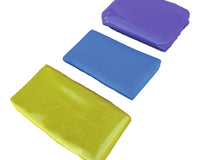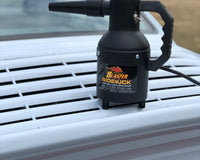Most car owners focus on exterior detailing and interior maintenance, but the engine bay is often overlooked. Regular cleaning of the engine bay is essential to keep it running efficiently, prevent dirt build-up, and reduce the risk of corrosion. A clean engine also makes it easier to spot leaks, damaged components, and worn-out parts before they become serious issues.
Over time, dust, grease, and grime accumulate in the engine bay. These contaminants can trap heat, leading to overheating issues. Additionally, oil and dirt build-up can cause rubber hoses and plastic components to degrade faster. By maintaining a clean engine bay, you enhance both the longevity and efficiency of your vehicle.
How Often Should You Clean Your Engine Bay?
The frequency of engine bay cleaning depends on driving conditions. If you frequently drive in dusty environments, during winter when roads are salted, or in areas with high humidity, you should clean your engine bay every 3 to 4 months. For average driving conditions, cleaning the engine bay twice a year is sufficient to maintain optimal performance.
Precautions Before Cleaning the Engine Bay
Before you begin, take these precautions to ensure safety and avoid damage:
-
Allow the engine to cool – Never clean a hot engine as sudden temperature changes can cause components to crack or warp.
-
Disconnect the battery – This prevents any accidental short circuits during the cleaning process.
-
Cover sensitive components – Use plastic bags or waterproof covers to protect electrical components such as the alternator, fuse box, air intake, and ECU from water damage.
-
Avoid excessive water pressure – A strong jet of water can force moisture into electrical connections, leading to malfunctions.
Step-by-Step Guide to Cleaning Your Engine Bay
1. Preparing the Engine Bay
Start by removing any loose debris such as leaves, dirt, or twigs that may have accumulated in the engine bay. Use a soft brush or compressed air to clear out hard-to-reach areas. This prevents these particles from mixing with cleaning solutions and creating a sludge-like residue.
2. Degreasing the Engine Bay
Grease and oil are common contaminants in the engine bay. To break down these substances, use an engine-safe degreasing solution. Apply the degreaser evenly, focusing on heavily soiled areas such as around the engine block, hoses, and valve covers. Allow the degreaser to sit for 5 to 10 minutes to loosen grime before scrubbing.
3. Scrubbing and Agitation
Using a soft-bristled brush or detailing brush, gently scrub the engine bay. Pay close attention to crevices and areas where dirt accumulates. For stubborn grime, use an old toothbrush to reach tight spaces. Avoid using harsh scrubbing tools that could damage delicate components.
4. Rinsing the Engine Bay
After scrubbing, carefully rinse the engine bay with low-pressure water. A garden hose with a controlled spray setting is ideal. Make sure to direct the water away from electrical connections and avoid prolonged exposure to moisture.
5. Drying the Engine Bay
To prevent water spots and corrosion, thoroughly dry the engine bay. Use a microfiber towel to wipe down components and remove excess moisture. Compressed air can be used to dry hard-to-reach areas, ensuring all water is expelled.
6. Inspecting the Engine Bay
Once the engine bay is dry, take a moment to inspect hoses, belts, and wiring for any signs of wear or damage. Look for cracks, leaks, or loose connections that may need attention.
7. Protecting and Dressing the Engine Bay
Applying a rubber and plastic protectant helps maintain the flexibility of hoses and plastic components while giving the engine bay a clean, professional finish. Use a microfiber applicator to spread a small amount of protectant over non-metallic surfaces.

Common Mistakes to Avoid When Cleaning the Engine Bay
-
Using high-pressure water – This can force moisture into electrical components and sensors, leading to malfunctions.
-
Cleaning a hot engine – Rapid temperature changes can cause metal and plastic parts to crack.
-
Skipping protective coverings – Failing to cover sensitive areas can result in costly electrical damage.
-
Overusing degreasers – Leaving degreasing agents on for too long can damage rubber and plastic parts.
Benefits of a Clean Engine Bay
1. Improved Engine Performance
Dirt and grime trap heat, which can lead to overheating. A clean engine bay allows for better heat dissipation, improving overall performance.
2. Easier Maintenance and Repairs
Regular cleaning makes it easier to spot issues such as fluid leaks, loose hoses, or worn belts, preventing costly repairs down the line.
3. Enhanced Resale Value
A well-maintained engine bay gives potential buyers confidence that the vehicle has been properly cared for, increasing its resale value.
4. Prevention of Corrosion and Wear
Removing dirt, oil, and road salt helps prevent corrosion, extending the lifespan of engine components.
Final Thoughts
Keeping your car’s engine bay clean is an important aspect of vehicle maintenance that improves performance, extends component lifespan, and enhances overall aesthetics. By following a regular cleaning routine and taking precautions, you can keep your engine running smoothly while avoiding unnecessary damage. Whether you clean your engine bay at home or opt for professional detailing services, maintaining a clean engine will ensure your vehicle remains in top condition for years to come.




